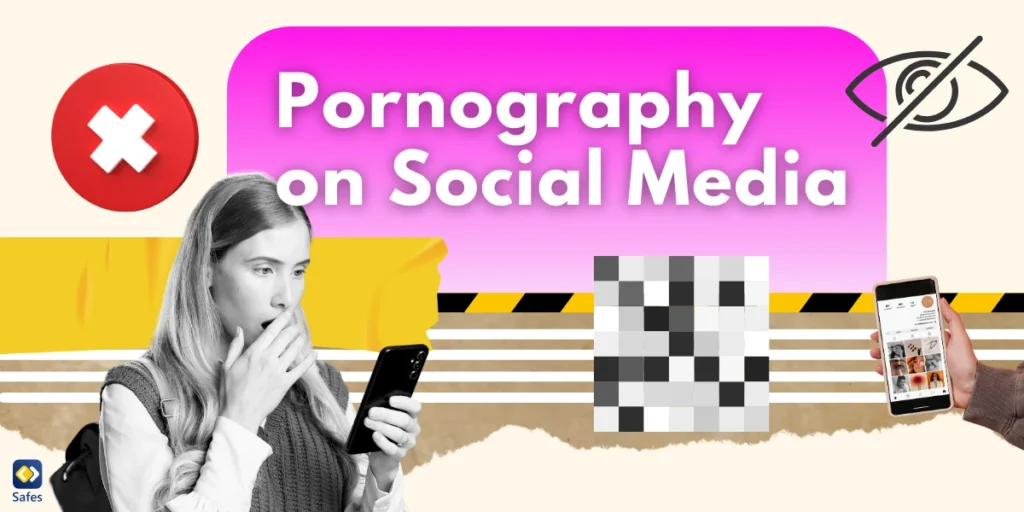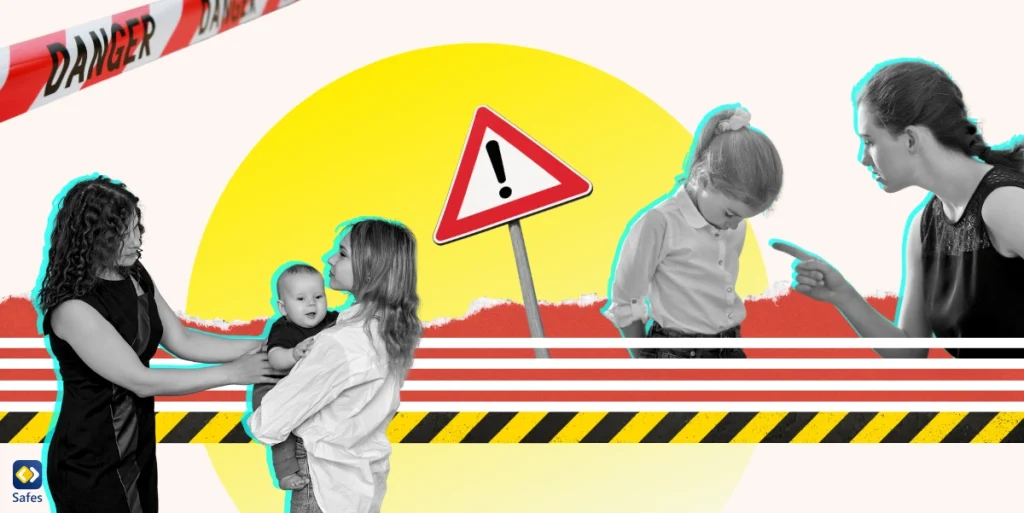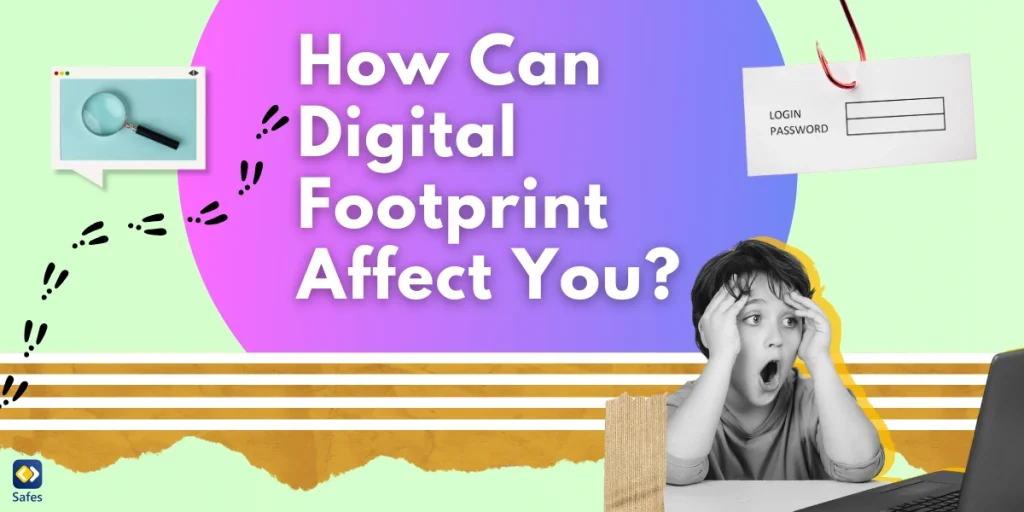With the rise in social media popularity, it has become the digital playground where youth spend countless hours. The impact of social media and pornography on children is a pressing issue that parents and educators cannot ignore. As virtual boundaries dissolve, it’s vital to understand how these influences shape young minds and behaviors.
Download and Start Your Free Trial of the Safes Parental Control App
Pornography is no longer hidden in obscure corners of the internet; it has infiltrated social media culture in subtle yet significant ways. This emerging concern raises questions about the content our children are exposed to daily. Recognizing this infiltration is the first step toward addressing its potential impact on youth development.
Understanding these influences equips parents with the knowledge to guide their children through the digital maze. It’s essential for adults to gain insight into how pornography affects social media culture. With this awareness, families can foster open dialogues and implement strategies to mitigate negative effects on their children’s well-being.
1. Fading Boundaries: When Mainstream Goes Explicit
Mainstream media increasingly features content that pushes the limits of what is considered acceptable, bordering on explicit. The trend of pornographic social media blurs the lines between entertainment and adult content. Such shifts challenge societal norms and present new dilemmas for parents trying to protect their children.
Social media platforms like Instagram and TikTok have become hotbeds for risqué content, where suggestive images and videos thrive. These environments enable provocative material to reach audiences of all ages, including minors. The accessibility of such content raises serious concerns about youth exposure to inappropriate material.
As explicit content becomes normalized, the threshold for what society deems acceptable shifts accordingly. This change impacts how young people perceive sexuality, relationships, and self-worth. Constant exposure can desensitize users, altering their expectations and behaviors in both online and offline interactions.
The permeation of explicit content into everyday media doesn’t stop at desensitization. It influences fashion trends, language, and social dynamics among youth. Understanding this ripple effect is crucial for addressing the broader cultural changes that challenge traditional values and parental guidance.

2. Influencers Under the Spotlight: Sexualization in the Public Eye
Influencers increasingly use sexualized content as an engagement tactic to boost their follower counts and likes. Provocative posts attract attention, driving higher levels of interaction on their profiles. While effective for growth, this strategy introduces younger audiences to adult themes prematurely.
When celebrities and influencers share provocative images, they become role models promoting a sexualized image of success. Young fans may emulate these behaviors, believing that such displays are a pathway to popularity and acceptance. This imitation can lead to unhealthy self-perceptions and distorted aspirations.
Addressing the influence of these figures presents significant challenges for parents. It’s tough to counteract the allure of celebrity when children are constantly bombarded with glamorous yet provocative content. Open conversations about media consumption and critical thinking are essential tools in a parent’s arsenal.
Parents can guide their children by curating the content they consume and discussing the implications of what they see online. Encouraging them to follow influencers who exemplify positive values can counteract the pervasive sexualization in media. This proactive approach helps maintain healthy development amid conflicting messages.
3. Soft-Core Content: The New Gateway
Soft-core material on social media acts as a gateway leading to more explicit content. It often starts innocently with suggestive images or videos but can escalate quickly, exposing young users to pornography. This progression is subtle yet significant in shaping perceptions and behaviors among impressionable audiences.
Despite guidelines intended to restrict explicit material, many platforms have loopholes that allow suggestive content to slip through. These gaps make it challenging to shield youth from exposure effectively. Understanding and navigating platform policies is essential for implementing safeguards that actually work.
The subtle influence of soft-core content on young users cannot be underestimated. It shapes their understanding of sexuality, relationships, and self-image in profound ways. Recognizing these impacts is the first step in mitigating potential harm and promoting healthier online experiences.
Parents and guardians can take measures by utilizing content filters and engaging in open dialogues about online content. Being aware of what children are exposed to and discussing it candidly helps build resilience. It’s about creating an environment where youths feel comfortable sharing their experiences and asking questions.
4. The Pornographic Lingo: Normalizing Explicit Language
Sexual language is becoming commonplace online, highlighting the effects of pornography on social media. Slang terms and innuendos are embedded in everyday conversations, often flying under the radar of adults. This normalization makes it crucial for parents to stay informed about the evolving digital lingo their children use.
Emojis have transformed into symbols for explicit communication, serving as a discreet language among users. These coded messages make monitoring difficult, as simple icons can carry suggestive meanings. Recognizing these symbols is vital for understanding the conversations children might be engaging in online.
Keeping up with ever-changing slang and emoji meanings presents significant challenges for parents. Even anti-porn software may not catch every subtle reference or coded message. Staying engaged with children’s online activities and fostering open communication can help bridge this gap.
Education and dialogue are key in bridging the generational divide in digital communication. By staying informed about new trends and discussing them openly, parents can guide their children effectively. This approach helps in promoting safe online practices without infringing on their sense of independence.
5. Unfiltered Access: Exposure to Explicit Content
Social media platforms often serve as direct links to pornography, providing easy access for users of all ages. Alarming statistics on pornography on social media platforms for children reveal a troubling trend that underscores the need for heightened vigilance. A study published in the Journal of Adolescent Health found that about one in five young people are unintentionally exposed to sexually explicit content online. The barrier between innocent browsing and explicit content is thinner than ever.
Algorithms suggest content based on user interactions, which can inadvertently lead to explicit material. A few innocent clicks can spiral into exposure to inappropriate content, highlighting the importance of supervised browsing. Understanding how these algorithms work is essential for protecting young users.
Parental controls and content filters play a crucial role in safeguarding children online. Implementing these tools can limit exposure to harmful material and provide peace of mind. It’s essential for parents to take an active role in setting up these protections and regularly reviewing their effectiveness.
Continuous education about new platforms, features, and potential risks helps parents stay ahead in the digital game. Regularly updating privacy settings and discussing online experiences with children reinforces safety measures. This proactive stance is vital in a rapidly evolving digital landscape.
6. Relationships Redesigned: Social Interactions Under Influence
The dangers of pornography extend to shaping unrealistic views on relationships and intimacy among youth. Exposure can lead to distorted perceptions, influencing how young people approach dating and social interactions. In some cases, this may contribute to developing a porn addiction further complicating their emotional well-being.
Exposure to explicit content can erode norms around consent and respect, critical components of healthy relationships. This erosion affects how young people interpret boundaries, potentially fostering harmful behaviors and attitudes. Addressing these issues is essential for promoting respectful interactions.
Social dynamics are heavily influenced by explicit content, with peer pressure encouraging participation in risky behaviors. Youth may feel compelled to emulate what they see online to fit in with their peers. Recognizing this influence is key to addressing issues before they escalate into serious problems.
Promoting open discussions about relationships, consent, and respect helps counteract negative influences. Education on healthy social interactions empowers youth to make informed decisions. Parents and educators play pivotal roles in guiding young people toward positive relationship models.

7. The Broken Image: Self-Perception and Well-being
Exposure to idealized bodies and sexualized images sets unrealistic standards, leading to body image issues. These effects of inappropriate content on minors contribute to dissatisfaction, low self-esteem, and unhealthy comparisons. It’s crucial to address these feelings to prevent long-term psychological impacts.
The emotional toll of consuming explicit content can be significant, affecting mental health in various ways. Anxiety, depression, and distorted self-worth are linked to these exposures. Recognizing these signs early allows for timely intervention and support.
Supporting youths in developing a healthy self-image involves fostering resilience and critical thinking skills. Encouraging activities that build confidence outside of social media is essential. This approach helps youths value themselves beyond superficial online metrics like likes and follows.
Access to counseling and support groups can aid in addressing mental health concerns stemming from exposure to explicit content. Parents should be proactive in seeking resources when needed. Providing a supportive environment encourages youths to share their struggles without fear of judgment.
Safes: Your Digital Ally in Stopping Porn
Parental control apps have become vital tools in navigating the challenges of modern digital life. Safes offers comprehensive features to help monitor and manage your child’s online activities. It’s designed to address the very issues discussed, providing peace of mind for families in an increasingly complex digital world.
We invite you to try Safes with our free trial, available on both iOS and Android. Empower yourself with the tools to protect your children and guide them safely through the digital landscape. With Safes, you’re not alone in this journey toward a safer online experience for your family.
Conclusion: The Battle Against Mainstream Pornography
The increasing presence of pornography in social media culture underscores the need for parental involvement. From blurred content lines to altered social interactions, the influences are profound. Recognizing these challenges, including the importance of age restrictions on social media because of pornography, is the first step toward effective solutions.
Encouraging open communication with children is more important than ever. Discussing online experiences and concerns builds trust and awareness, enabling youths to navigate challenges confidently. It’s about creating a safe space where they feel heard and supported.
Practical advice includes utilizing parental controls, staying informed about digital trends, and seeking out educational resources. By taking these steps, parents can effectively support and protect their children in an ever-evolving digital world. Together, we can foster a healthier online environment for the next generation.
By understanding and addressing the ways pornography shapes social media culture, parents can play a pivotal role in guiding their children toward healthy digital habits. The journey starts with awareness and continues with proactive engagement, ensuring that youths are equipped to navigate the complexities of the digital age safely.
Your Child’s Online Safety Starts Here
Every parent today needs a solution to manage screen time and keep their child safe online.
Without the right tools, digital risks and excessive screen time can impact children's well-being. Safes helps parents set healthy boundaries, monitor activity, and protect kids from online dangers—all with an easy-to-use app.
Take control of your child’s digital world. Learn more about Safes or download the app to start your free trial today!



